What is Enterprise Application Integration (EAI)?
The generic term EAI (Enterprise Application Integration) refers to the mostly automated integration (connection) of a company's IT systems. company. EAI helps companies to exchange data between their exchange data between their own systems. The integration through EDI software eliminates the need for manual manual data maintenance by employees, which in turn saves time, resources and resources and thus also saves enormous costs.
What is EAI software needed for?
If you take a look at the typical IT landscape of a medium-sized company, it quickly becomes clear that there is a multitude of different IT systems, some of which have been in use for many years or even decades. decades of successful operation. These heterogeneous IT landscapes consisting of ERP, PIM, PPS, LVS, WWS, CRM, DMS, FIBU or store systems or shop systems are most likely to work together for the realization of of enterprise-wide IT processes. In order to integrate the various systems and thus also the most diverse interfaces with each other there is the EAI software approach. EAI software connects thanks to a wide range of interface support, the most diverse systems with each other effortlessly. Even older systems, which have only rudimentary rudimentary IT interfaces can be integrated into a modern IT landscape without having to without the need to replace them.
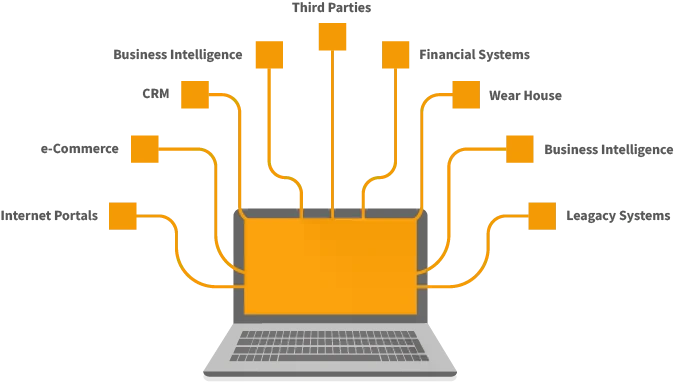
Suitable application interfaces for connecting an EAI solution:
- CSV
- Databases
- FLATFILE
- JSON
- XML
What are the different EAI topologies?
When setting up an EAI platform, there are various options for building the topology.

The individual systems have a direct 1-to-1 connection. This topology is particularly suitable for a comparatively small number of integrations. The setup is done quickly and at low cost. However, with growing requirements, however, this topology can become impractical or and many connections, this topology can become impractical or confusing.
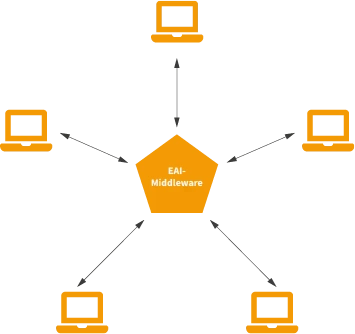
As integration requirements increase, the Hub & Spoke topology may be a better, albeit initially more setup-intensive, method. In this type, data is exchanged with each other via the central hub (EAI middleware) in an n-m topology. Besides the high start-up costs the risk of a single point of failure is a disadvantage compared to the other topologies.
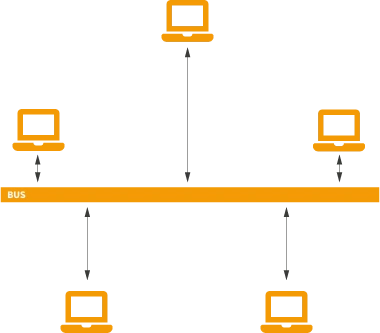
When a hub system is no longer sufficient for particularly time-critical business processes or data exchange processes, a pipeline topology comes into play. In this form of EAI system, data is distributed from one system to many other systems 1-N (broadcast) or requested by many systems N-1 (pull). Similar to the Hube & Spoke system, high startup costs are an obstacle in this architecture.
What are the benefits of EAI software?
EAI software helps companies to implement the integration tasks of the various heterogeneous systems centrally in one software solution. EAI ensures consistently high data quality, avoids human errors in data entry through electronic processing, and is therefore efficient and saves costs. In addition to the resources required for data capture, the use of EAI software also frees up IT resources, as the use of EAI does not require any programming skills, thus freeing up valuable resources for other work.
- Cost savings through automated work without human intervention
- High data quality by connecting a wide range of heterogeneous systems
- Integration of legacy software thanks to broad integration options
- Central middleware reduces the complexity and number of interfaces to be set up
- Monitoring in a platform facilitates enterprise-wide system monitoring
EAI sounds like EDI: What's the difference?
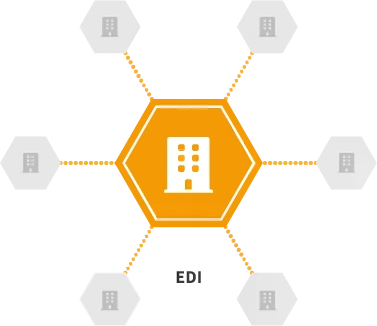
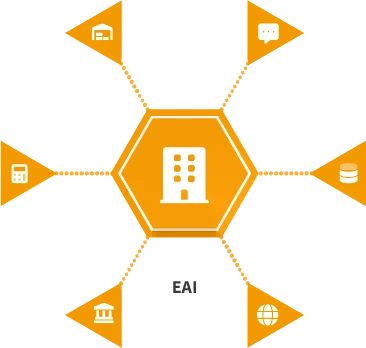
Basically, this statement is not wrong. EAI is very similar to EDI (Electronic Data Interchange), since EDI is also about the exchange of data between IT systems. However, with electronic data interchange (EDI), the focus is on the exchange of business documents between so-called trading partners. EDI replaces the paper-based exchange process of documents between the company and its customers or suppliers. In concrete terms, this means that companies that use EDI, for example, transmit invoices electronically to their customers in a specific data format. This form of exchange has existed for decades and is primarily used for integration beyond the company's own boundaries.
EAI Implementation - Basic Steps
Define business process or data exchange process
Identify interfaces of the systems
Set up data mapping and transmission
Application examples of EAI software
One application scenario in which EAI software is frequently used is the connection of warehouse systems (WMS) to management systems such as enterprise resource planning (ERP) or enterprise resource planning (ERP).
By linking the two systems, it is possible, for example, to use product information from the ERP in the warehouse management system as well. The automated data exchange ensures that the data is always up to date and manual maintenance of the product information is not necessary. In the other direction, stock levels, for example, can be transferred to the system so that the data from the warehouses can also be viewed in real time in the administration.
What is an Enterprise Service Bus (ESB)?
When the term EAI is mentioned, the term ESB is often mentioned at the same time. An Enterprise Service Bus is a concrete application form of Enterprise Application Integration (EAI). However, an ESB usually uses a service-oriented architecture (SOA) for integration between the participants. The goal is to use a service-oriented architecture to simplify access to complex systems with the help of central services.
Im Jahr 2002 wurde der Begriff Enterprise Service BUS erstmalig genutzt um Systeme zu beschreiben, die die in den 90er Jahren genutzten dezentralen Systeme und die damit unzähligen entstandenen Anbindungen über diverse Schnittstellen in einer Sterntopologie zu harmonisieren. Ziel ist eine zentrale Integration der Schnittstellen im ESB mit Webservices und häufig XML als Dateiformat. Der sogenannte Message Broker (Bus) und die Adapter (Schnittstellen) übernehmen in diesem Fall die Aufgaben der Integration hin und vom ESB. Die Integrationen ist somit nicht als verteilte Skripte sondern in einer Runtime (OSGI) organisiert.
In 2002, the term Enterprise Service BUS was used for the first time to describe systems that harmonize the decentralized systems used in the 1990s and the countless connections that arose with them via various interfaces in a star topology. The goal is a central integration of the interfaces in the ESB with web services and often XML as file format. In this case, the so-called message broker (bus) and the adapters (interfaces) take over the tasks of integration to and from the ESB. The integrations are thus not organized as distributed scripts but in a runtime (OSGI).
Since 2010, ESB solutions have been used less and less because modern EAI solutions nowadays no longer rely on the now unpopular SOA standard and XML as the central file format. Due to the introduction and increasing use of REST services and JSON as a file format and the increased use of cloud applications, this time has been intensified since then.
For the reasons mentioned above, the term "enterprise service bus" is now only used for the now obsolete technology of an integration solution.

Contact
We will be happy to advise you personally and compile
an individual concept with you. Request now without obligation.
